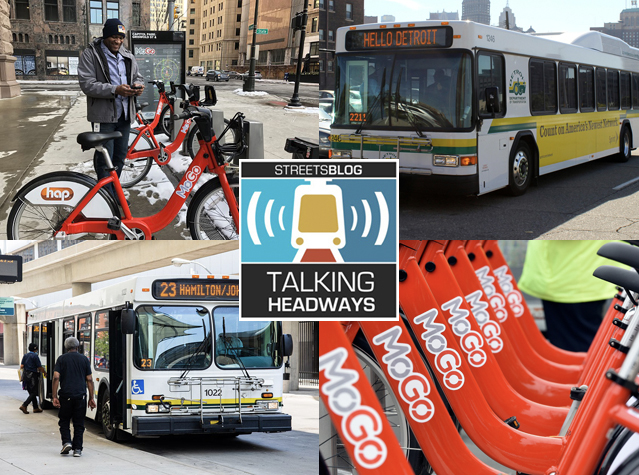This week we’re joined by Jacob Graham, a program manager for MoGo Bike Share in Detroit. We talked about how the system works in the so-called Motor City, how bike-share riders and bus riders coincide, the benefits of electric bikes, and coordination with other organizations.
If you're the kind of person who prefers to read than to listen, check out an edited transcript below the player. If you want a full unedited transcript, click here (but remember: there will be typos).
Jeff Wood: You surveyed riders about travel habits and bus and the bike connections. What did the report tell you about these different groups of riders?
Jacob Graham: The report showed us that cash is the primary way that people pay for the bus. That wasn’t a surprise, but to see the numbers laid out so starkly was really important when we are thinking about people combining trip methods because MoGo and all micro mobility that I’m aware of is credit- or debit-card forward, whereas bus systems tend to be cash forward — and certainly DDOT and Smart in our region are very cash forward systems. The buses don’t take credit cards. They’ve recently launched a payment app, but it’s pretty limited at this point and the use of it is very limited.
So to work with the high percentage of cash users on the bus network and the high percentage of credit card users on the bike share network is a major challenge we identified. Something that was less of a surprise was the location of stations. We really found that a lot of bus riders did not know where the nearest MoGo station was relative to their bus stop. And so there’s a couple responses that we can make to that. Some of that is just signage — helping people through wayfinding.
But a bigger, more expensive piece of that is moving those stations or adding new stations that are closer to a bus stop so that when someone gets on or off the bus, ideally they don’t even need signage to find the MoGo station. Ideally it’s there and it’s very visible. Of course there are some limitations to that because you can get on and off the bus, you know, northbound, southbound, eastbound, westbound. We’re not very close to having a MoGo station on any set of four corners anytime soon. We like to think that we’re doing well, but maybe we don’t have that kind of cash to be on all four corners of an intersection just yet.






